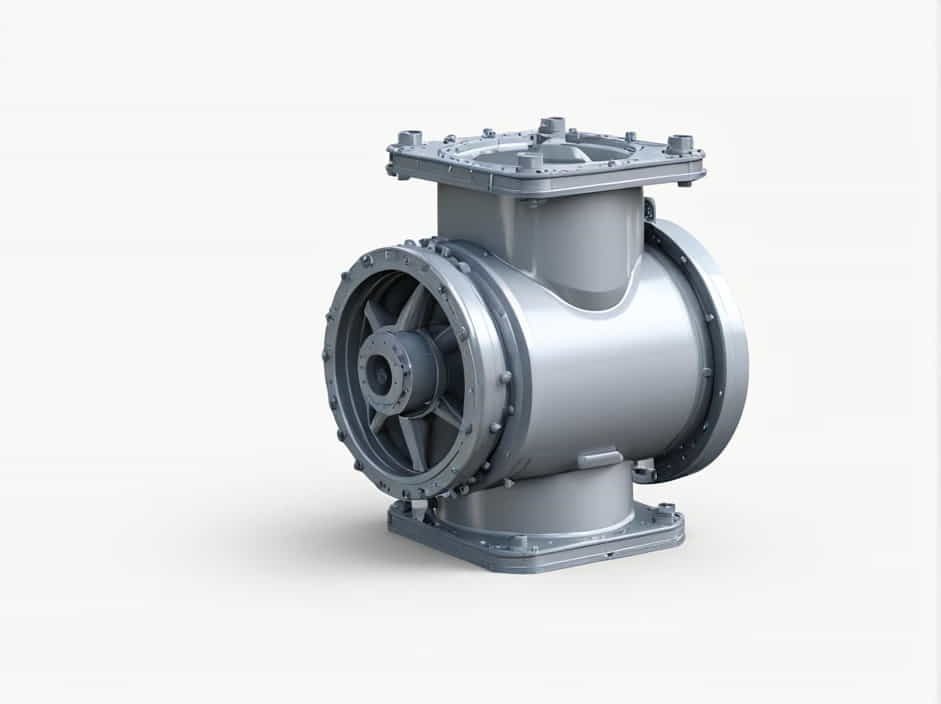A rotary airlock valve is a crucial component in dust collection systems, helping to regulate airflow and maintain system efficiency. It plays a vital role in handling bulk materials, preventing air leakage, and ensuring smooth operation in industrial environments.
This topic explains the function, benefits, types, and applications of rotary airlock valves in dust collectors.
What is a Rotary Airlock Valve?
A rotary airlock valve is a mechanical device designed to control the flow of material from one chamber to another while maintaining air pressure balance. It is commonly used in dust collection systems, pneumatic conveying systems, and bulk material handling industries.
How It Works
The valve consists of a cylindrical housing with a rotating impeller (rotor) inside. As the rotor turns, it collects dust or bulk material from the dust collector hopper and discharges it into another system while minimizing air loss.
Importance of a Rotary Airlock Valve in Dust Collection
Using a rotary airlock valve in a dust collection system provides several advantages:
✔ Prevents Air Leaks – Maintains pressure balance by minimizing airflow loss.
✔ Enhances Dust Collector Efficiency – Ensures proper discharge of collected dust.
✔ Reduces Energy Consumption – Improves system performance by maintaining airflow control.
✔ Handles Various Materials – Works with fine dust, granules, and bulk powders.
✔ Minimizes Material Waste – Ensures proper material discharge without clogging.
Types of Rotary Airlock Valves
There are different types of rotary airlock valves designed for specific applications:
1. Drop-Through Rotary Valve
🔹 The most common type, where material drops directly through the valve.
🔹 Suitable for fine dust and powders in standard dust collection systems.
2. Blow-Through Rotary Valve
🔹 Designed for pneumatic conveying applications.
🔹 Material is fed through the valve into an air stream.
3. Heavy-Duty Rotary Valve
🔹 Built for abrasive materials such as cement, sand, and minerals.
🔹 Features wear-resistant components for extended durability.
4. High-Temperature Rotary Valve
🔹 Designed to withstand extreme heat in applications like boilers and kilns.
🔹 Made from heat-resistant alloys.
Key Components of a Rotary Airlock Valve
A rotary airlock valve consists of several critical parts:
🔹 Housing – The outer shell, typically made from cast iron, stainless steel, or aluminum.
🔹 Rotor (Impeller) – The rotating mechanism that moves material through the valve.
🔹 End Plates – Support the rotor and provide sealing.
🔹 Bearings and Seals – Prevent leakage and maintain smooth operation.
🔹 Drive Mechanism – Motor or gearbox that powers the rotor.
Applications of Rotary Airlock Valves in Dust Collectors
Rotary airlock valves are used across various industries:
1. Woodworking Industry
✔ Removes sawdust and wood chips from CNC machines and cutting tools.
2. Cement and Mining Industry
✔ Handles heavy-duty dust from crushers, kilns, and cement processing plants.
3. Food Processing Industry
✔ Ensures controlled material discharge in flour mills, bakeries, and spice production.
4. Pharmaceutical Industry
✔ Used for dust control in tablet and capsule manufacturing.
5. Chemical and Plastic Industry
✔ Transfers bulk powders like resins, polymers, and chemical compounds.
How to Choose the Right Rotary Airlock Valve for Your Dust Collector
Selecting the right valve depends on several factors:
✔ Material Type – Consider ptopic size, abrasiveness, and moisture content.
✔ Operating Temperature – Choose a valve that can withstand heat if necessary.
✔ System Pressure – Ensure the valve maintains proper airlock function.
✔ Capacity and Throughput – Match the valve size to the dust collector’s discharge rate.
✔ Build Material – Opt for stainless steel for food and pharmaceutical use or heavy-duty cast iron for industrial applications.
Maintenance Tips for Rotary Airlock Valves
Proper maintenance increases the lifespan and efficiency of rotary airlock valves:
✔ Regular Inspection – Check for wear on rotor blades and housing.
✔ Lubrication – Ensure bearings and seals are well-lubricated.
✔ Cleaning – Remove material buildup to prevent clogging.
✔ Seal Replacement – Replace worn-out seals to maintain airlock performance.
A rotary airlock valve is an essential component in dust collection systems, helping to control material flow, maintain air pressure, and improve efficiency. Whether in woodworking, cement, food processing, or chemical industries, choosing the right valve ensures smooth and effective operation.
By understanding the types, functions, and maintenance practices, businesses can enhance their dust collection systems and achieve better air quality, energy savings, and workplace safety.
